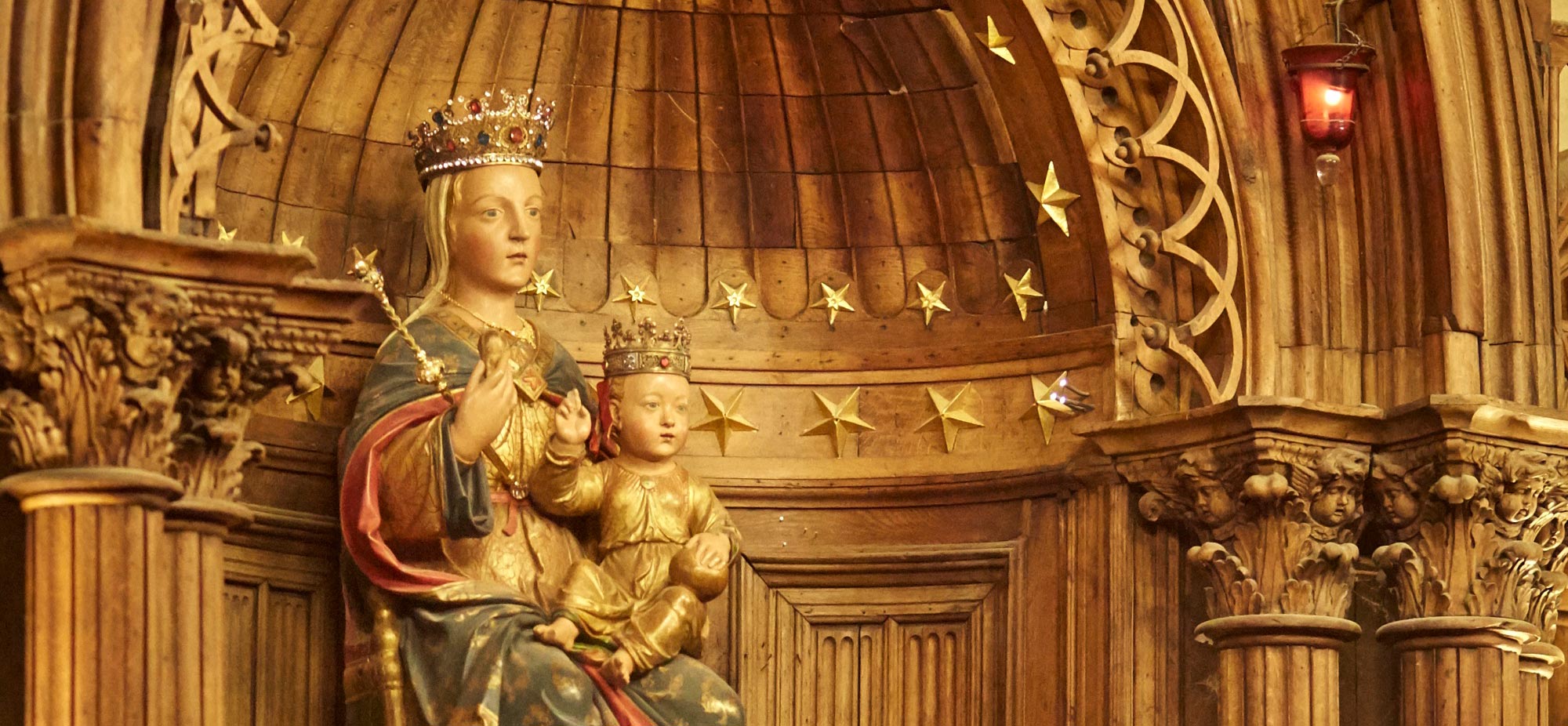
Major place of devotion, about which we often hear some approximations.
To address our readers’ questions, here is a brief historical summary as published in the Notre-Dame de Chartres magazine.
(continued)
In 1791, the constitutional bishop Bonnet replaced it with the Vierge de Sous-Terre, and to get rid of it, it was deposited somewhere in the crypt. Of no material value, it tempted no one and survived the revolutionary period unscathed.
When worship was re-established, it was returned to its place in the nave, on the column that had supported the Vierge de Sous-Terre before 1793. A little later, in 1806, Mr. Maillard, an inserter who had returned from exile and became the second parish priest after the Concordat, placed it where it still stands, on a column of the former rood screen, earning it the name of Notre-Dame du Pilier.
At first, it was presented in a rather poor décor, replaced after 1831 by the current woodwork, thanks to the initiative of chaplain M. Lapierre.
Since then, Our Lady of the Pillar has been the object, on a number of memorable occasions, of manifestations attesting to the piety of the faithful. We will mention only her crowning, in the name of His Holiness Pius IX, on May 31, 1855. On that day, the eloquent bishop of Poitiers, Mgr Pie, delivered a memorable speech that has been quoted many times.
Not all visitors to our cathedral – some in too much of a hurry, which is a pity for them – are familiar with Notre-Dame de Sous-Terre. But all of them, even the least attentive, notice this Virgin before whom candles burn. Only the Chartrains have the opportunity to see her – once a year, on May 31st – without the rich garments that usually cover her.
It’s a beautiful work of art, with all the hallmarks of Renaissance sculpture and polychromy. But Mary’s attitude is very much that of the Virgins of the XlIIth century: seated, head erect, she holds the Infant Jesus on her left knee. This contrast can be explained by the fact that, in the 16th century, the intention was to reproduce, albeit freely, the Virgin of the high altar, which was then some three centuries old.
A final word. Contrary to popular belief, Notre-Dame du Pilier is indeed the “Black Madonna”, because the paint covering her face has disappeared, revealing the black wood of which she is made.
In the past, she was called “the (large) Black Madonna” to distinguish her from the alabaster “White Madonna”, placed in the 14th century in front of the rood screen, but on the opposite side. To call the crypt Virgin the “Black Virgin” is to distort tradition.